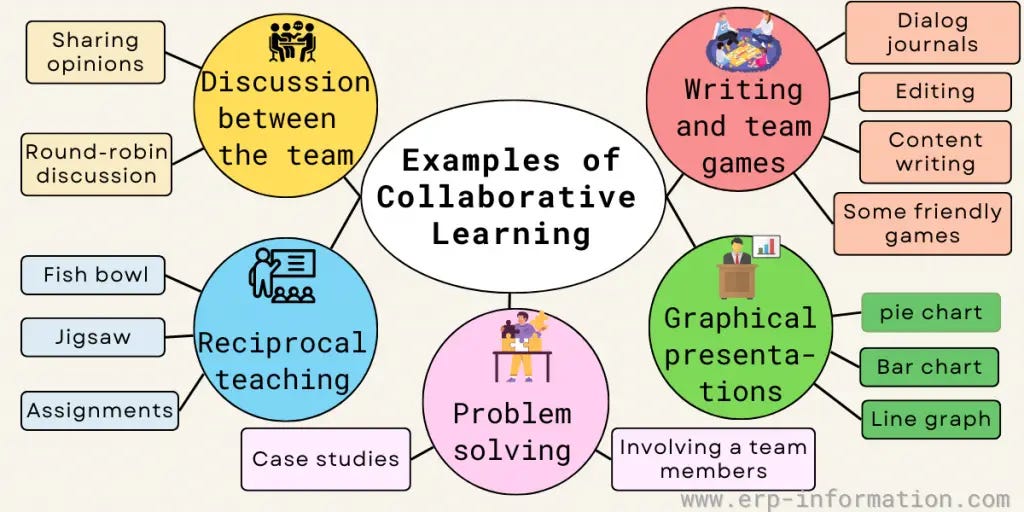The Benefits of Collaborative Learning
Collaborative learning, also known as cooperative learning, is an educational approach that emphasizes group work and active participation. It involves students working together in small teams to achieve a common goal, fostering a sense of community and shared responsibility. In this article, we will explore the numerous benefits of collaborative learning and how it can enhance the educational experience.
Enhanced Learning Experience
Collaborative learning provides students with an enhanced learning experience by promoting active engagement and participation. When students work together in groups, they are encouraged to share ideas, discuss concepts, and solve problems collectively. This interactive process allows for a deeper understanding of the subject matter as students can learn from each other’s perspectives and experiences.
Improved Critical Thinking and Problem-Solving Skills
Engaging in collaborative learning activities helps students develop critical thinking and problem-solving skills. Through group discussions and brainstorming sessions, students learn to analyze information, evaluate different viewpoints, and develop effective solutions to complex problems. This collaborative approach encourages students to think critically and consider alternative perspectives, leading to more well-rounded and comprehensive outcomes.
Enhanced Communication and Interpersonal Skills
Collaborative learning fosters the development of effective communication and interpersonal skills. Working in groups requires students to express their thoughts and ideas clearly, actively listen to others, and engage in respectful dialogue. By engaging in collaborative activities, students learn to communicate effectively, negotiate, and resolve conflicts in a constructive manner. These skills are invaluable in both academic and professional settings.
Promotion of Active Learning
Collaborative learning promotes active learning, where students take an active role in their own education. Instead of passively receiving information, students actively participate in discussions, contribute to group projects, and engage in hands-on activities. This active involvement enhances retention and understanding of the subject matter, as students become actively invested in their own learning process.
Development of Social and Emotional Skills
Collaborative learning provides students with opportunities to develop social and emotional skills. By working together in teams, students learn to cooperate, respect others’ opinions, and empathize with their peers. This collaborative environment helps students build positive relationships, develop teamwork skills, and cultivate a sense of belonging and community within the classroom.
Enhanced Creativity and Innovation
Collaborative learning encourages creativity and innovation. When students collaborate, they can bounce ideas off each other, inspire new ways of thinking, and come up with innovative solutions. The diverse perspectives and experiences within a group foster a creative and dynamic learning environment, where students can explore new ideas and push the boundaries of their knowledge.
Preparation for Real-World Challenges
Collaborative learning prepares students for real-world challenges by simulating real-life situations. In professional settings, individuals often work in teams to accomplish goals and solve problems. By engaging in collaborative learning experiences, students develop the skills necessary for effective teamwork, collaboration, and problem-solving, which are highly valued in the workplace.

Collaborative learning offers numerous benefits that enhance the educational experience and prepare students for future success. By promoting active engagement, critical thinking, communication, and teamwork, collaborative learning fosters a holistic approach to education. Embracing collaborative learning methodologies can transform traditional classrooms into dynamic and interactive spaces, empowering students to become lifelong learners and active contributors to society.
Frequently Asked Questions – Benefits of Collaborative Learning
1. What is collaborative learning?
Collaborative learning is an educational approach where students work together in groups to achieve a common goal or solve a problem.
2. What are the benefits of collaborative learning?
Collaborative learning promotes active engagement, enhances critical thinking skills, improves communication and interpersonal skills, and fosters a sense of community among learners.
3. How does collaborative learning improve critical thinking skills?
Through collaborative learning, students can engage in discussions, analyze different perspectives, and learn to evaluate and synthesize information, which enhances their critical thinking abilities.
4. Can collaborative learning help in developing teamwork skills?
Absolutely! Collaborative learning requires students to work together, share responsibilities, and collaborate effectively, which helps them develop essential teamwork skills.
5. Does collaborative learning benefit all students equally?
Yes, collaborative learning benefits all students regardless of their academic abilities or backgrounds. It promotes inclusivity and provides opportunities for peer learning and support.
6. How does collaborative learning enhance communication skills?
Through collaborative learning, students engage in discussions, actively listen to others, express their ideas, and provide constructive feedback, which improves their communication skills.
7. Can collaborative learning improve problem-solving abilities?
Absolutely! Collaborative learning encourages students to collectively identify problems, brainstorm solutions, and evaluate the effectiveness of different approaches, thereby enhancing their problem-solving abilities.
8. Does collaborative learning promote independent thinking?
Yes, collaborative learning encourages students to think critically and independently while also considering the perspectives and ideas of their peers.
9. How can collaborative learning foster a sense of community?
By working together towards a common goal, students develop a sense of belonging, respect for others, and a supportive community within the learning environment.
10. Are there any real-world applications of collaborative learning?
Absolutely! Collaborative learning mirrors real-life situations where individuals often work in teams to solve complex problems, make decisions, and achieve common objectives.




